White cane-type holdable device using illusory pulling cues. (a) Overview. (b) Internal configuration.
Abstract:
For visually impaired people, a white cane is an important aid for obtaining information about the surrounding environment. Although the visually impaired should attend t...Show MoreMetadata
Abstract:
For visually impaired people, a white cane is an important aid for obtaining information about the surrounding environment. Although the visually impaired should attend this training by orientation & mobility (O&M) specialists to learn proper cane technique, the number of specialists is limited. In our previous study, we developed a training system that enabled the visually impaired to learn white cane techniques using illusory pulling cues. In the previous prototype system, a cane grip-type device was developed with a built-in vibrator to generate asymmetric vibration stimuli, and illusory pulling cues were fed according to the position of the cane tip. Although the prototype system showed positive results, issues related to the lack of user-friendliness of the device associated with the wired drive and the impractical gripping method were observed. This study developed a more practical white-cane-type device for O&M training, envisioning independent training for the visually impaired, which improved the above-mentioned issues. Specifically, the device was wireless and had a vibration mechanism for the gripping method of the general cane technique, and its validity was demonstrated by evaluation experiments. In addition, the paper explains the usefulness of the device as per discussion with an active O&M specialist. The results of the evaluation experiments indicated that the devices were implemented to satisfy the requirements for cane training.
White cane-type holdable device using illusory pulling cues. (a) Overview. (b) Internal configuration.
Published in: IEEE Access ( Volume: 11)
Funding Agency:
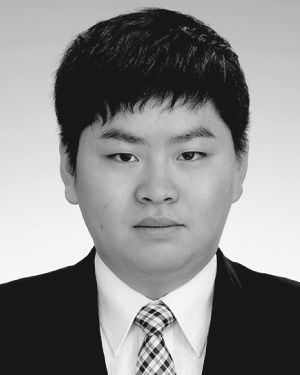
Human Informatics and Interaction Research Institute, National Institute of Advanced Industrial Science and Technology (AIST), Tsukuba, Ibaraki, Japan
Takeshi Tanabe (Member, IEEE) received the M.S. and Ph.D. degrees in engineering from the University of Tsukuba, Tsukuba, Japan, in 2017 and 2019, respectively. He is currently a Researcher with the Human Informatics and Interaction Research Institute, National Institute of Advanced Industrial Science and Technology (AIST). He received the JSPS Research Fellowship for Young Scientists (DC1), from 2017 to 2019. His researc...Show More
Takeshi Tanabe (Member, IEEE) received the M.S. and Ph.D. degrees in engineering from the University of Tsukuba, Tsukuba, Japan, in 2017 and 2019, respectively. He is currently a Researcher with the Human Informatics and Interaction Research Institute, National Institute of Advanced Industrial Science and Technology (AIST). He received the JSPS Research Fellowship for Young Scientists (DC1), from 2017 to 2019. His researc...View more
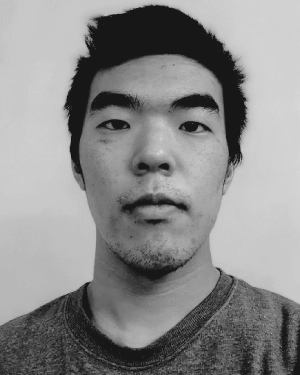
School of Engineering, Osaka University, Suita, Osaka, Japan
Yasuhiro Fujimoto is currently pursuing the bachelor’s degree with Osaka University. His research interest includes assistive technology for visually impaired people.
Yasuhiro Fujimoto is currently pursuing the bachelor’s degree with Osaka University. His research interest includes assistive technology for visually impaired people.View more
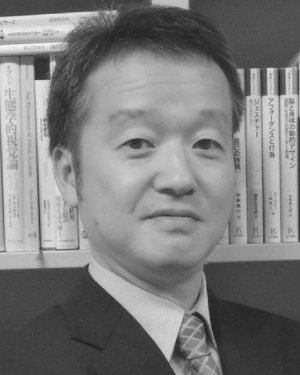
School of Human and Social Sciences, Tokyo International University, Kawagoe, Saitama, Japan
Kiyohiko Nunokawa (Member, IEEE) received the Ph.D. degree in engineering from the University of Tsukuba. He is a Professor with Tokyo International University. His research interests include assistive technology for visually impaired people and tool-body assimilation with a white cane and an artificial limb prosthesis.
Kiyohiko Nunokawa (Member, IEEE) received the Ph.D. degree in engineering from the University of Tsukuba. He is a Professor with Tokyo International University. His research interests include assistive technology for visually impaired people and tool-body assimilation with a white cane and an artificial limb prosthesis.View more
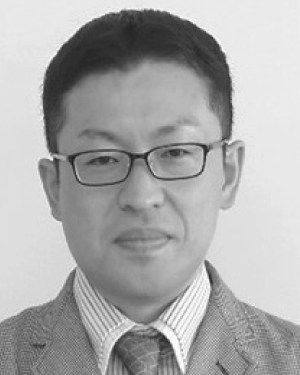
Faculty of Human Life and Science, Doshisha Women's College of Liberal Arts, Kyoto, Japan
Kouki Doi received the B.S. degree in applied chemistry and the M.S. and Ph.D. degrees in rehabilitation engineering (human sciences) from Waseda University, Japan, in 1999, 2004, and 2007, respectively. He was with Toray Industries, Inc., as an Engineer and a Sales Engineer, from 1999 to 2001. Since 2002, he has been a Teaching Assistant with the Faculty of Human Sciences, Waseda University, where he has been an Assistan...Show More
Kouki Doi received the B.S. degree in applied chemistry and the M.S. and Ph.D. degrees in rehabilitation engineering (human sciences) from Waseda University, Japan, in 1999, 2004, and 2007, respectively. He was with Toray Industries, Inc., as an Engineer and a Sales Engineer, from 1999 to 2001. Since 2002, he has been a Teaching Assistant with the Faculty of Human Sciences, Waseda University, where he has been an Assistan...View more
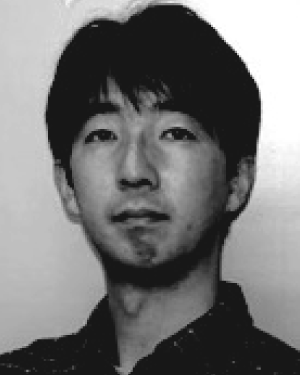
Graduate School of Engineering, Osaka University, Suita, Osaka, Japan
Shuichi Ino (Member, IEEE) received the B.S. degree in electronic engineering and the M.S. and Ph.D. degrees in biomedical engineering from Hokkaido University, Sapporo, Japan, in 1988, 1990, and 1993, respectively. In 1993, he joined the Research Institute for Electronic Science, Hokkaido University, as an Assistant Professor. Since 2003, he has been an Associate Professor with the Research Center for Advanced Science an...Show More
Shuichi Ino (Member, IEEE) received the B.S. degree in electronic engineering and the M.S. and Ph.D. degrees in biomedical engineering from Hokkaido University, Sapporo, Japan, in 1988, 1990, and 1993, respectively. In 1993, he joined the Research Institute for Electronic Science, Hokkaido University, as an Assistant Professor. Since 2003, he has been an Associate Professor with the Research Center for Advanced Science an...View more

Human Informatics and Interaction Research Institute, National Institute of Advanced Industrial Science and Technology (AIST), Tsukuba, Ibaraki, Japan
Takeshi Tanabe (Member, IEEE) received the M.S. and Ph.D. degrees in engineering from the University of Tsukuba, Tsukuba, Japan, in 2017 and 2019, respectively. He is currently a Researcher with the Human Informatics and Interaction Research Institute, National Institute of Advanced Industrial Science and Technology (AIST). He received the JSPS Research Fellowship for Young Scientists (DC1), from 2017 to 2019. His research interests include haptic illusion and assistive technology for visually impaired people.
Takeshi Tanabe (Member, IEEE) received the M.S. and Ph.D. degrees in engineering from the University of Tsukuba, Tsukuba, Japan, in 2017 and 2019, respectively. He is currently a Researcher with the Human Informatics and Interaction Research Institute, National Institute of Advanced Industrial Science and Technology (AIST). He received the JSPS Research Fellowship for Young Scientists (DC1), from 2017 to 2019. His research interests include haptic illusion and assistive technology for visually impaired people.View more

School of Engineering, Osaka University, Suita, Osaka, Japan
Yasuhiro Fujimoto is currently pursuing the bachelor’s degree with Osaka University. His research interest includes assistive technology for visually impaired people.
Yasuhiro Fujimoto is currently pursuing the bachelor’s degree with Osaka University. His research interest includes assistive technology for visually impaired people.View more

School of Human and Social Sciences, Tokyo International University, Kawagoe, Saitama, Japan
Kiyohiko Nunokawa (Member, IEEE) received the Ph.D. degree in engineering from the University of Tsukuba. He is a Professor with Tokyo International University. His research interests include assistive technology for visually impaired people and tool-body assimilation with a white cane and an artificial limb prosthesis.
Kiyohiko Nunokawa (Member, IEEE) received the Ph.D. degree in engineering from the University of Tsukuba. He is a Professor with Tokyo International University. His research interests include assistive technology for visually impaired people and tool-body assimilation with a white cane and an artificial limb prosthesis.View more

Faculty of Human Life and Science, Doshisha Women's College of Liberal Arts, Kyoto, Japan
Kouki Doi received the B.S. degree in applied chemistry and the M.S. and Ph.D. degrees in rehabilitation engineering (human sciences) from Waseda University, Japan, in 1999, 2004, and 2007, respectively. He was with Toray Industries, Inc., as an Engineer and a Sales Engineer, from 1999 to 2001. Since 2002, he has been a Teaching Assistant with the Faculty of Human Sciences, Waseda University, where he has been an Assistant Researcher with the Faculty of Science and Engineering, since 2004. Since 2007, he has been an Assistant Professor with the Faculty of System Design, Tokyo Metropolitan University, Japan. He was the Chief Researcher with the National Institute of Special Needs Education, Japan. He is currently an Associate Professor with the Doshisha Women’s College of Liberal Arts. His research interests include rehabilitation engineering, human factors, and material application for people with disabilities.
Kouki Doi received the B.S. degree in applied chemistry and the M.S. and Ph.D. degrees in rehabilitation engineering (human sciences) from Waseda University, Japan, in 1999, 2004, and 2007, respectively. He was with Toray Industries, Inc., as an Engineer and a Sales Engineer, from 1999 to 2001. Since 2002, he has been a Teaching Assistant with the Faculty of Human Sciences, Waseda University, where he has been an Assistant Researcher with the Faculty of Science and Engineering, since 2004. Since 2007, he has been an Assistant Professor with the Faculty of System Design, Tokyo Metropolitan University, Japan. He was the Chief Researcher with the National Institute of Special Needs Education, Japan. He is currently an Associate Professor with the Doshisha Women’s College of Liberal Arts. His research interests include rehabilitation engineering, human factors, and material application for people with disabilities.View more

Graduate School of Engineering, Osaka University, Suita, Osaka, Japan
Shuichi Ino (Member, IEEE) received the B.S. degree in electronic engineering and the M.S. and Ph.D. degrees in biomedical engineering from Hokkaido University, Sapporo, Japan, in 1988, 1990, and 1993, respectively. In 1993, he joined the Research Institute for Electronic Science, Hokkaido University, as an Assistant Professor. Since 2003, he has been an Associate Professor with the Research Center for Advanced Science and Technology, The University of Tokyo, Tokyo, Japan. Since 2008, he has been the Deputy Director of the Human Informatics and Interaction Research Institute, National Institute of Advanced Industrial Science and Technology, Tsukuba, Japan, and a Professor with the Cooperative Graduate School Program, University of Tsukuba, Tsukuba. He is currently a Professor with Osaka University. His research interests include quality-of-life technologies, human factors in virtual reality and robotics, and soft actuator systems for people with disabilities.
Shuichi Ino (Member, IEEE) received the B.S. degree in electronic engineering and the M.S. and Ph.D. degrees in biomedical engineering from Hokkaido University, Sapporo, Japan, in 1988, 1990, and 1993, respectively. In 1993, he joined the Research Institute for Electronic Science, Hokkaido University, as an Assistant Professor. Since 2003, he has been an Associate Professor with the Research Center for Advanced Science and Technology, The University of Tokyo, Tokyo, Japan. Since 2008, he has been the Deputy Director of the Human Informatics and Interaction Research Institute, National Institute of Advanced Industrial Science and Technology, Tsukuba, Japan, and a Professor with the Cooperative Graduate School Program, University of Tsukuba, Tsukuba. He is currently a Professor with Osaka University. His research interests include quality-of-life technologies, human factors in virtual reality and robotics, and soft actuator systems for people with disabilities.View more

